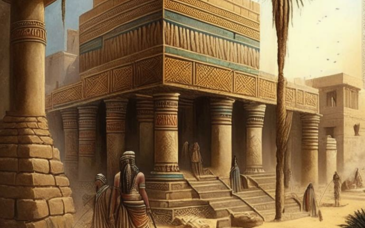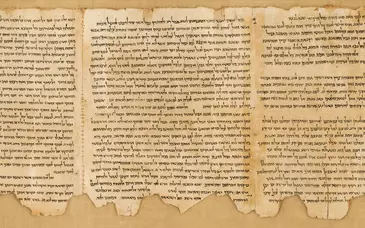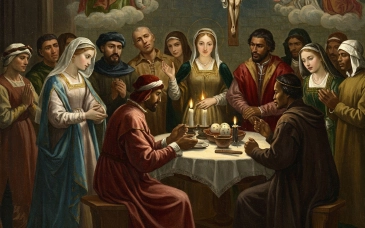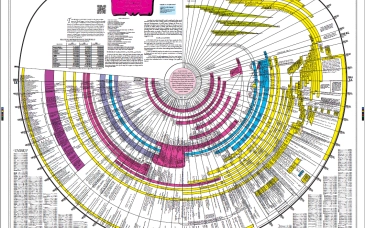
A Christian church with beautifully crafted mosaic floors was discovered by a construction crew building a new neighborhood in Israel. Once the ruins were found the Israel Antiquity Authority (IAA) was called in and a salvage operation was begun. The structure was found to be a 1,500 year old Christian church located on what was once a main road between the seaport of Ashkelon and Jerusalem. It is believed the church was larger than normal to accommodate travelers and peoples from nearby villages. The ruins, along with the mosaic floors, are to be salvaged and moved to another location where they will be put on public display.
The archaeologist found a number of beautiful mosaic tiled floors, but the most interesting element was a large symbol of Christ. Initial reports claimed this to be a Christogram, a symbol for the name of Christ. It some ways it resembles a cross but this is considered a coincidence since early Christians would have not placed a cross on the floor. It was considered wrong to step of the cross which was the symbol of Christ. Instead they believe the symbol puts together the first two letters of Christ using the Greek alphabet. This will commonly resemble an X placed atop a P.

Almost as soon as pictures of the symbol and news of it were released they were surrounded by controversy. Other scholars, after seeing the image, insist it is not a Chirstogram and does not represent two letters from the Greek alphabet. Instead they believe it was a very early form of a staurogram. In this case the staurogram combines the word for cross and the word for crucify. This of course is in reference to Jesus’ death on the cross. The symbol found is an early representation of what came to be a stand along symbol for Christ used by early Christians.
Other areas of the mosaic include five separate inscriptions. Among these are the names of Jesus, Mary and the person who financed the construction of the mosaic. Adjacent to the church archaeologist also discovered a pottery workshop which contained bowls, lamps and a variety of cooking pots. Daniel Varga directed the excavation for the IAA.
Decorate your yard with custom garden flags featuring inspirational Bible verses, religious symbols, or messages of faith. A wonderful way to share your beliefs and brighten up your outdoor space.








